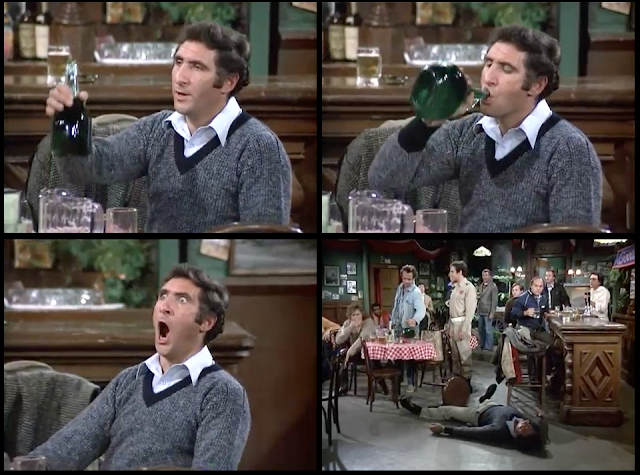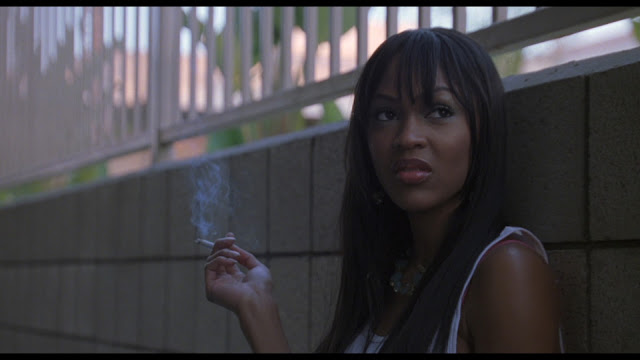 |
| The effects of brefnish |
Nah Right posted last week a lengthy and interesting interview with jazz pianist Bob James, one of the most sampled musicians in hip-hop. What started out as a contentious relationship between James and beatmakers because of their tendency in the late '80s and early '90s to sample music without permission (James sued DJ Jazzy Jeff and the Fresh Prince over the unauthorized use of
"Westchester Lady") has mellowed into something less hostile and gone in some unexpected directions. James started collaborating with former X-Ecutioners DJ Rob Swift and has now assembled the new release
Rhodes Scholar: Jazz-Funk Classics 1974-1982, a compilation of his own most sampled instrumentals that's being marketed to newer fans who were first exposed to James through hip-hop.
James'
1975 cover of Paul Simon's "Take Me to the Mardi Gras," which the late Jam Master Jay flipped in Run-DMC's 1986 classic
"Peter Piper," is included on
Rhodes Scholar. So are
"Nautilus," a 1974 tune James originally thought of as filler but has become one of his most frequently sampled compositions (it's looped in
"Daytona 500," one of my favorite Ghostface Killah joints), and 1981's
"Sign of the Times," which opens with a calliope solo by James that provided Prince Paul with a catchy hook for "Keepin' the Faith," a highlight of 1991's
De La Soul Is Dead, my favorite De La Soul album. Of course,
Rhodes Scholar would have been incomplete without the first James tune I ever heard, "Angela (Theme from
Taxi)," which also has been frequently sampled by beatmakers.
Both "Angela" and "Groove for Julie," another theme James wrote for the still-hilarious sitcom about loser cabbies in Manhattan (a show that premiered 35 years ago on September 12, 1978--I didn't need
Marilu Henner's highly superior autobiographical memory to verify that), are currently in rotation on "AFOS Prime" on AFOS. Why? Is it because I'm a smooth jazz softie? No, I'm hardly a smooth jazz softie, and who cares that it's smooth jazz? James'
Taxi score music is just damn good.
When the original
Law & Order was filmed on location in New York City, TV reviewers would often say the city itself was like a seventh main character on
L&O. Even though
Taxi also took place in the Big Apple, you see very little of the actual city during
Taxi.
That's because this studio-bound show was never filmed on location and never had any scenes outdoors due to the limitations enforced by three things: 1) the multi-camera sitcom format, 2) a modest budget ($260,000 per episode, much lower than the $1.5 million it cost to shoot each episode of the
low-cost-by-today's-standards It's Always Sunny in Philadelphia in 2010) and 3) the
Taxi producers' insistence on a realistic look (which was achieved by having all the cab scenes occur at night and shooting them on a pitch-black stage with remarkably convincing, stage play-style lighting effects to simulate passing lights, rather than shooting them against a cheesy-looking blue screen). So instead of New York, James' score music is the eighth character on this seven-member ensemble sitcom, and it does the job of establishing the
troubled but oddly alluring late '70s/early '80s
New York setting that the city itself couldn't do (outside of stock footage) because like many sitcoms at the time,
Taxi was
filmed in front of a live studio audience in Hollywood.
That's how integral James' music is to
Taxi, even though you hear only 10 or 15 seconds of it during the zoom lens-reliant establishing shots that co-creator/showrunner James L. Brooks carried over from his previous sitcom
The Mary Tyler Moore Show. James' groovetastic and mostly melancholy instrumentals--the sort of themes you'd encounter while watching a gritty
poliziotto from Italy but not a multi-camera '70s sitcom--helped define and distinguish
Taxi, its character-based humor and its distinctively bleak tone in the same way Henry Mancini's West Coast jazz sounds defined
Peter Gunn, Angelo Badalamenti's
ethereal and sometimes kitschy motifs defined
Twin Peaks and Yoko Kanno's brassy, J-pop-meets-the-Knitting-Factory jams defined
Cowboy Bebop.
The bleak tone was why both
Taxi and the equally sophisticated and gritty
Barney Miller stuck out like sore thumbs on the late '70s/early '80s ABC sitcom schedule, surrounded by much broader and more dumbed-down sitcoms like
Happy Days, its gazillion spinoffs and
Three's Company. It's also why
Taxi continues to stick out like a sore thumb in reruns (good luck finding
Taxi on cable, although I hear Me-TV network affiliates are rerunning it again) and continues to have a reputation as a slept-on classic, even though it influenced
Taxi staff writers Glen and Les Charles' hit creation
Cheers; the earlier seasons of
The Simpsons, Brooks' biggest hit as a TV producer; the original
Office;
Party Down; and
Community--and even though the animalistic asshole persona of Danny DeVito's Louie De Palma paved the way for misanthropic Larry David creations like
Seinfeld and
Curb Your Enthusiasm and even DeVito's own
It's Always Sunny.
I abhor most older sitcoms with studio audience laughter or laugh tracks, a.k.a. canned laughter. But
Taxi is one of the few I still revisit either on the CBS streaming service or in bootlegged form on YouTube (screw Paramount's DVDs of the show, which are disappointingly bare-bones and slightly butchered due to music rights issues) because the writing and acting on
Taxi were always tops (even during that occasionally bumpy first season where the writers had trouble figuring out what to do with Randall Carver's John Burns, a proto-Woody Boyd who was written out of the show in the second season and replaced in the cast by a guest star from the previous season, the much more funny Christopher Lloyd as drug-addled Reverend Jim Ignatowski). It remains one of my favorite shows.
You read about--or if you're a masochist, you watch--a racist piece of shit like the
Seth MacFarlane production
Dads, and
its lame-ass punchlines bum you out about many things, like the shabby state of multi-camera sitcoms today. None of these newer multi-cams--even with frequent
Taxi director James Burrows at the helm of many of their pilots--measure up to
Taxi. Quality writing and genuine laughs elude these multi-cams like the meaning of a yellow light during Reverend Jim's driver's license exam.
Taxi's more low-key and realistic side was represented by the characters of world-weary pragmatist Alex Rieger, ambitious single mom Elaine Nardo, aspiring actor Bobby Wheeler and thick-headed prizefighter Tony Banta and what current
Dissolve writer Noel Murray referred to in
a 2004 A.V. Club piece as "building small stories out of the cabbies' money troubles or their offbeat passengers while dealing more honestly and humorously with the indignity of a service economy." Some critics and even some
Taxi fans felt that low-key and realistic side meshed awkwardly with the show's
Simpsons-y, outlandish side. That other side consisted of Ignatowski's
confused wordplay shtick and stoned hijinks; Latka Gravas and his
split personality
issues; the strange customs and
brefnish-fueled pastimes of the unnamed Eastern European country Latka and his girlfriend/wife Simka emigrated from; and of course, tyrannical Louie and his various
schemes. I never agreed that it was an awkward juxtaposition. I always thought the way
Taxi juggled both sides was perfect. Speaking of perfection...
"And then there's that Bob James theme song, so pretty and forlorn, playing in the opening credits over an endless shot of a cab crossing a bridge and never getting anywhere," wrote Murray. "It's the whole mood and meaning of the show, established in less than a minute."
True. There are several interesting bits of trivia about that opening credits footage. Who's the driver inside that cab on the Queensboro Bridge (which, by the way, was renamed in 2010, in honor of former NYC mayor Ed Koch,
an enemy of hip-hop culture who was
famously put on blast by Spike Lee in
Do the Right Thing)? He's none other than Tony Danza, and the
Taxi producers culled the footage from the same shoot where they filmed the only scene shot on location in NYC in the show's history: Tony's amusingly brief
"Memories of Cab 804" flashback to the moment when he stopped a passenger from jumping off the Queensboro Bridge. The problem with the footage that was chosen for the intro was that it was only 15 seconds long, which wasn't enough time to flash the credits of
Taxi's sizable cast, so the editor looped the footage. It resulted in a clever and dark-humored encapsulation of the show's premise of working-class dreamers struggling to succeed. It also made the bridge as long as
that airport runway in the climax of
Furious 6.
The choice of "Angela" was another happy accident, and like the bridge footage, the tune wasn't originally intended for the opening credits. It was a theme James wrote for a character named Angela Matusa (Suzanne Kent), an obese and lonely phone operator Alex befriends in
"Blind Date," one of the show's earliest episodes.

















